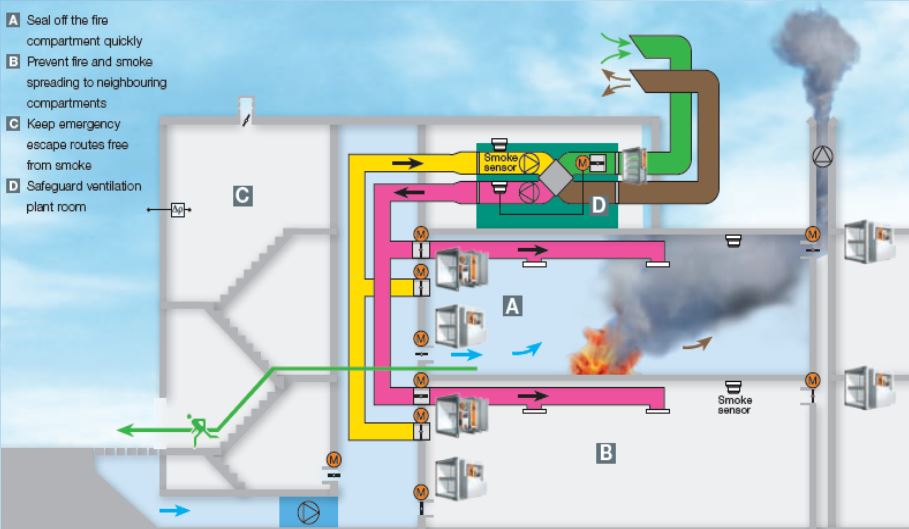Fire dampers and Smoke dampers – Case of ”Better safe than sorry”?
Fire dampers and Smoke dampers – case of ”Better safe than sorry”?
Ventilation fire and smoke safety! ‘safety is never a compromise’
Smoke is recognized as the major killer in fire situations. Smoke often migrates to building locations remote from the fire space, threatening life and damaging property. Stairwells and elevator shafts frequently become smoke logged, thereby blocking evacuation and inhibiting rescue and fire fighting.
General Principles of Advanced Fire and Smoke Prevention System
- Fire compartment is located as quickly as possible by smoke detectors
- Fire and smoke dampers are closed in the case of a fire and
- Smoke extract dampers and fresh air paths are opened in affected fire compartment
- It is important to keep escape and emergency routes free of smoke
Without smoke control With smoke control


Powered Fire and Smoke Control – Principal

Automatic Smoke extract system

1.Fire Dampers are closed & Ventilation Fans are shut off
2.Smoke Exhaust and Pressure Relief dampers in the fire zone are opened & Smoke Fan is started
Advantages:
- Evacuation & Fire fighting easier
- Financial losses minimized, including Ventilation system
- Simple, fast response system approach
Smoke Exhaust, General Principles
Targets:
- Enable safe evacuation
- Make fire fighting easier
- Minimize financial losses
Outcomes:
- Reduce pressure in the fire zone
- Reduce Temperature in the fire zone
- Clean air zone at lower level
- Controlled evacuation of the smoke
Limiting the spread of Smoke – with Smoke Dampers Hotel/Hospital/Care Home Floor Plan
Smoke dampers at each Guest room
A Smoke dampers at each Guest room
B In the case of fire:
1. All smoke dampers are closed
2.Fans and fire dampers react only if the fire spreads
Advantages:
- Spread of smoke to other cells minimized
- Evacuation easier
- Ventilation system protected








